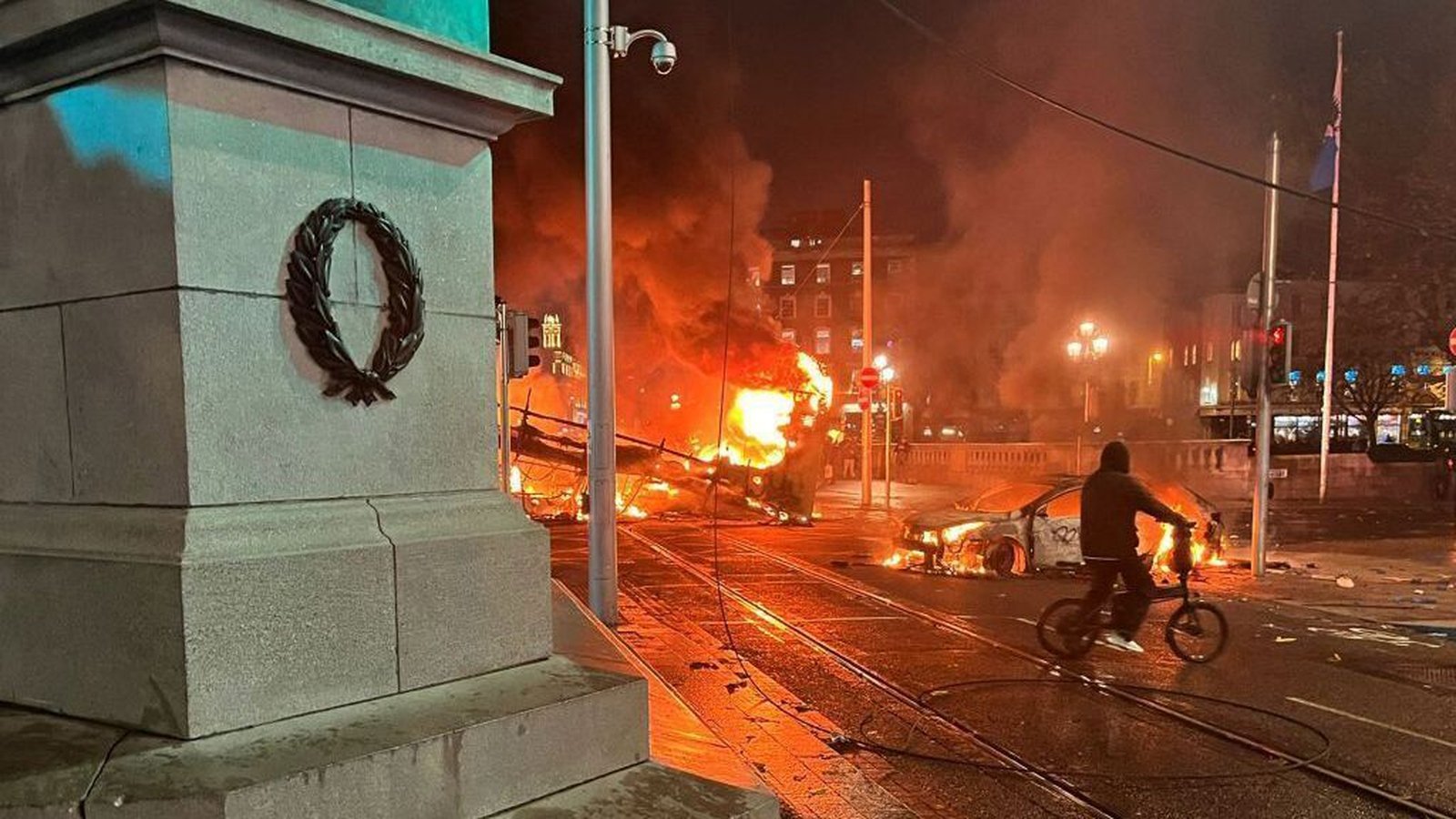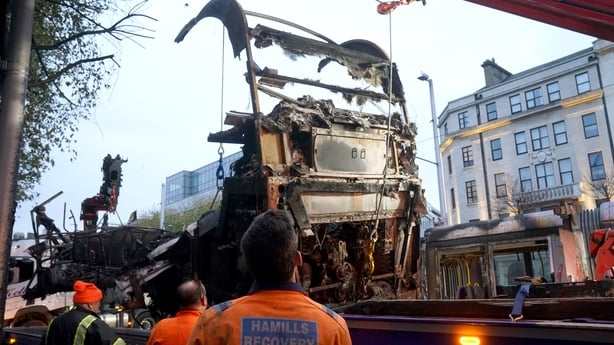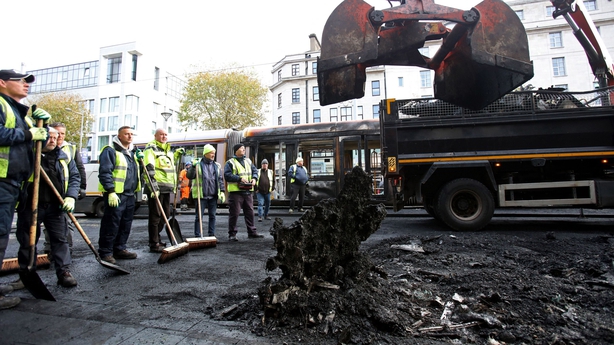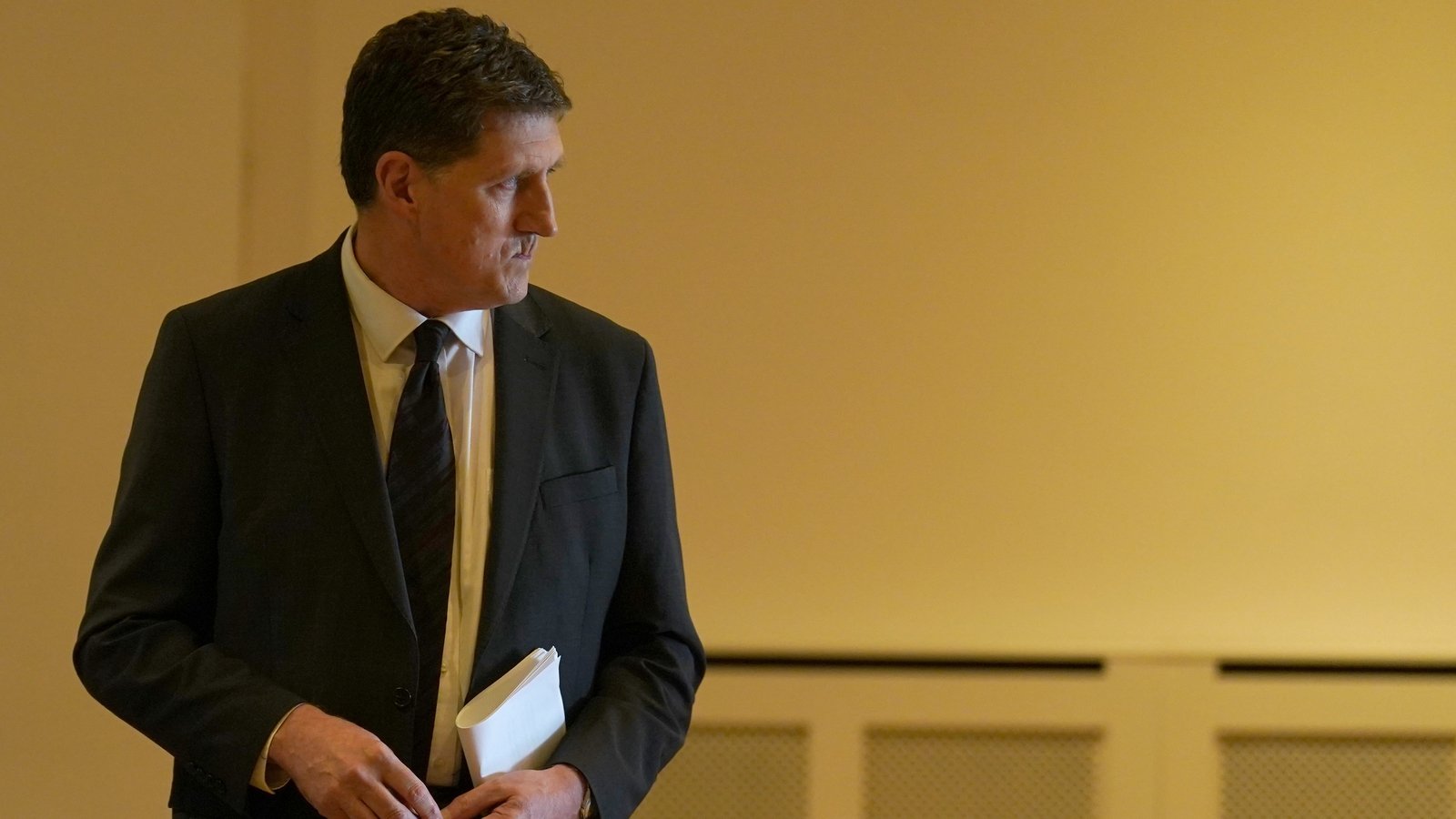Cost of vehicle damage in Dublin riots around €5m

A public transport briefing following last year’s rioting in Dublin said the cost of damage to vehicles was likely to be around €5 million and that a rethink of updates for the public during a crisis was needed.
A note prepared for the board of the National Transport Authority (NTA) said travel information had “initially proved difficult” to update as services were diverted or cancelled, but improved as time went on.
It also raised questions over whether a crisis management call should have been scheduled earlier on the night of the riots, after a stabbing incident on Parnell Square prompted online anger and a crowd to gather at the crime scene cordon.
The note said: “Should a crisis management call have been called earlier than 10pm?
“At the time it was felt that the operators had enough to deal with and may not have had time for an all-operator meeting.”
In a section entitled ‘Lessons Learnt’, the NTA said work on their mobile app TFI Live was needed to tell customers that information might not always be accurate during a “security event”.
It said a series of “template messages” would be developed for such incidents, which included public disorder, severe weather or other major unforeseen disruptions.

Details of three of the recommendations were withheld under Freedom of Information (FOI) law on the basis it could risk the safety of gardaí and compromise the NTA’s ability to manage emergency scenarios.
The note also described the scale of destruction with an estimated repair bill of €5 million as three Dublin Bus vehicles were destroyed, one Luas tram severely damaged and another bus suffered extensive fire damage.
The overhead electrical wiring for the Luas at O’Connell Street also fell because of a fire but fortunately it had already been “de-energised” by Transdev, the operators of the light rail network.
The briefing note described how a Luas tram had been hemmed in by crowds on Upper O’Connell Street as multiple attempts to get it to safety failed because protesters blocked its path.
It said: “As the situation became more volatile, Transdev staff were forced to leave the vehicle to ensure their safety.
“Before doing so the tram was secured, de-prepped and cameras from the control room were used to monitor the tram and area.
“The tram had its windows smashed, and flammable materials and fuel were pushed in through a broken window and set alight.”

The note also detailed how six Dublin Bus vehicles had been trapped on the capital’s main street and that in the interests of safety, drivers had been recommended to leave them and go to their nearest depot.
The briefing said the Dublin Bus Emergency Plan was activated at around 7pm with a decision made to stop any cross city routes from travelling through the central area of Dublin.
It said attempts were made to provide a limited service by allowing buses to travel as far as locations that included Leeson Street, Harold’s Cross, Griffith Avenue and Broadstone.
The NTA board were told that the Go Ahead operator, which runs some bus services in the capital, ensured its Dublin commuter services went only as far as Heuston Station.
“Shortly before 10pm when there was no sign at that point of the situation de-escalating, they took the decision to suspend all services,” the document said.
They had three vehicles stuck on the quays but got them back to the depot in the early hours,” it added.

Bus Éireann were able to keep many services running through Busáras in the early part of the evening, but from 10pm to 3am it began to stop routes at Dublin Airport, Broadstone, Heuston Station and Donnybrook.
“Apart from a brief closure of Tara Street station, no significant impacts were reported to the NTA on rail services,” the briefing added.
The note said there was no doubt that the impact of the riot had been “severe” with customers forced to make alternative arrangements to exit the city.
It said the NTA had been kept up to speed by An Garda Síochána, transport operators and other Government agencies on what was happening in the city.
“This allowed us to provide the latest information to the transport operators to assist them make the right decisions for operations,” it said.
“We also received their advice on when they considered that it was safe to resume services,” it added.





